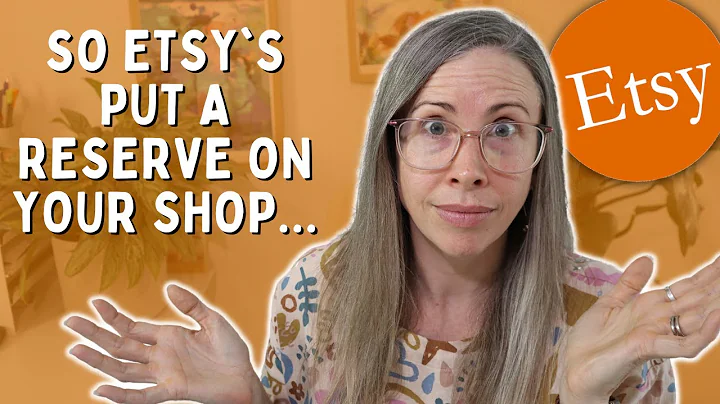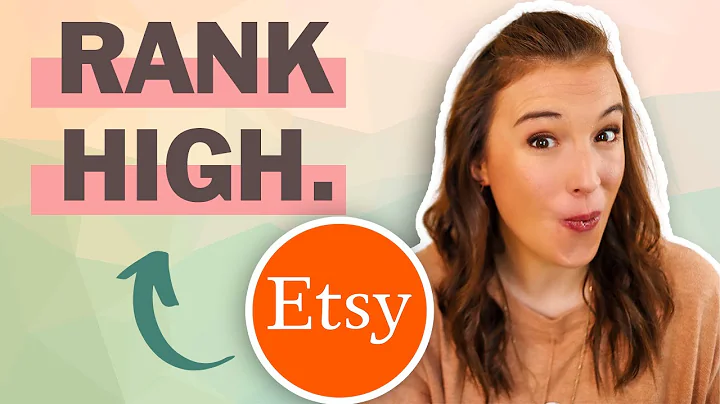Start Selling on Etsy: Create Your Shop Account Now!
Table of Contents
- Introduction
- Setting Up Your Account
- Registering for an Etsy Account
- Transferring your Account from a Buyer to a Seller
- Creating Your Shop
- Choosing a Shop Name
- Selecting Shop Preferences
- Setting Up Shop Payments
- Ensuring Shop Security
- Managing Your Shop Dashboard
- Understanding the Dashboard
- Monitoring Shop Views and Revenue
- Working with Listings
- Reopening and Closing Your Shop
- Getting Help and Support
- Community Forums
- Seller Handbook
- Help Center and Contacting Support
How to Create Your Etsy Account and Set Up Your Shop
Are you thinking of starting an online business selling your unique handmade products? Etsy is a popular platform that allows artisans and crafters to showcase and sell their creations to a global audience. If you're new to Etsy and wondering how to create your account and set up your shop, you're in the right place. In this article, we'll guide you through the process step by step.
1. Introduction
Before we dive into the nitty-gritty details, let's take a moment to introduce Etsy and its benefits. Etsy is an online marketplace specifically designed to connect buyers and sellers of handmade, vintage, and craft supplies. With millions of active buyers worldwide, it offers a great opportunity for artisans to reach a wide audience and grow their businesses.
2. Setting Up Your Account
Registering for an Etsy Account
The first step in starting your Etsy journey is to create an account. Don't worry; it's a simple process. Here's how:
- Open your web browser and go to the Etsy website (etsy.com).
- On the homepage, locate the "Sign In" section on the upper side of the website.
- Since you don't have an account yet, click on the "Register Now" option.
- Fill in your email address, first and last name, and choose a secure password.
- You can also choose to register using your Google, Facebook, or Apple account for a quicker process.
- After verifying your information, you'll be welcomed into Etsy with your name.
Transferring your Account from a Buyer to a Seller
If you already have an account on Etsy but want to switch from being a buyer to a seller, you can easily do so. Here's how:
- Log into your Etsy account.
- Look for your account options, usually located in the upper section of the website.
- Click on "Sell on Etsy" or a similar option.
- You'll be directed to a page where you can start your shop setup process.
3. Creating Your Shop
Now that you have an Etsy account, it's time to create your shop. Your shop is where you'll showcase and sell your products.
Choosing a Shop Name
The first step in setting up your shop is choosing an appealing and memorable name. Here are some tips to help you make a decision:
- Make it unique and representative of your brand.
- Consider using keywords related to your products for better search visibility.
- Check if the name is available by searching for it on Etsy.
Once you've decided on a name, you can proceed with setting up your shop.
Selecting Shop Preferences
When you're starting your shop, Etsy will ask you a few questions to help provide you with relevant resources and tools. These questions are designed to cater to your specific goals and level of expertise. Answering them will assist Etsy in tailoring its recommendations to your needs.
Some common questions you might encounter are:
- What brings you to Etsy?
- Are you here to explore or start selling online?
- What do you need help with? (e.g., product photography, marketing, packaging)
Answer the questions honestly to receive personalized guidance from Etsy.
Setting Up Shop Payments
To receive payments from your customers, you'll need to set up your billing information. This step is crucial for tax purposes and ensuring a smooth transaction process. Be sure to provide accurate information about your country of residence and banking details to avoid any delays in receiving your earnings.
Ensuring Shop Security
Etsy takes shop security seriously and offers various security features to protect sellers and their customers. During the shop setup process, you'll be prompted to enable security measures such as two-factor authentication and secure messaging. It's highly recommended to take advantage of these features to safeguard your shop and personal information.
4. Managing Your Shop Dashboard
Once your shop is set up, you'll have access to your shop dashboard. This dashboard provides valuable insights and tools to help you manage and grow your business effectively.
Understanding the Dashboard
The shop dashboard is your control center, where you can monitor the performance of your shop, view sales data, and make adjustments to your listings and settings. It provides an overview of your shop's activity and important metrics, such as total views, orders, and revenue. Familiarize yourself with the dashboard to make the most out of its features.
Monitoring Shop Views and Revenue
One of the key aspects of running a successful shop is keeping track of your views and revenue. Etsy's dashboard allows you to monitor these metrics and gain insights into your shop's performance. By analyzing this data, you can identify trends, understand customer behavior, and make informed decisions to optimize your shop.
Working with Listings
Listings are the individual products or items you offer for sale in your shop. Managing your listings effectively is crucial for attracting potential buyers and driving sales. In the shop dashboard, you can create, edit, and manage your listings, ensuring they are compelling, well-described, and accompanied by attractive photos.
5. Reopening and Closing Your Shop
There might be occasions when you need to temporarily close or reopen your shop. Etsy provides the flexibility to do so with just a few clicks. Whether it's because you're taking a break or need to catch up with a high demand, you can easily control the opening and closing of your shop as per your requirements.
6. Getting Help and Support
As a new seller on Etsy, it's normal to have questions and seek guidance along the way. Etsy offers a variety of resources and support channels to assist sellers at any stage of their journey.
Community Forums
Engaging with other sellers and the Etsy community is an excellent way to share experiences, gain insights, and find answers to your questions. Explore the community forums, participate in discussions, and connect with fellow entrepreneurs who understand the challenges and opportunities of selling on Etsy.
Seller Handbook
For comprehensive guidance on selling on Etsy, be sure to explore the Seller Handbook. It features a wealth of articles covering topics such as finding your niche, creating compelling listings, getting five-star reviews, and many more. The Seller Handbook is a valuable resource to help you make the most of your Etsy shop.
Help Center and Contacting Support
If you can't find the answers you're looking for in the community forums or Seller Handbook, Etsy's Help Center is your ultimate destination. Browse through the comprehensive collection of frequently asked questions and explore the various support topics available. If you need further assistance, you can also contact Etsy's customer support team directly.
In conclusion, opening an Etsy shop and selling your unique products is an exciting venture. By following the steps outlined in this article and taking advantage of Etsy's resources and support, you'll be well on your way to creating a successful online business. Good luck, and may your Etsy journey be filled with creativity and prosperity!
Highlights
- Etsy is a popular online marketplace connecting buyers and sellers of handmade, vintage, and craft supplies.
- Creating an Etsy account is a simple process, and you can register using your email or existing social media accounts.
- If you're already an Etsy user, you can easily switch from being a buyer to a seller.
- Setting up your shop involves choosing a shop name, selecting preferences, setting up payments, and ensuring shop security.
- The shop dashboard provides valuable insights and tools to manage your shop effectively.
- Monitoring shop views and revenue helps track performance and make informed decisions.
- Etsy offers flexibility in reopening and closing your shop as needed.
- The community forums, Seller Handbook, and Help Center are great resources for getting help and support.
FAQ
Q: How much does it cost to open a shop on Etsy?
A: Opening a shop on Etsy is free, but there are small fees for listing items and transaction fees when you make a sale.
Q: Can I sell digital products on Etsy?
A: Yes, Etsy allows you to sell digital products like PDF patterns, printables, and downloadable artwork.
Q: Can I sell internationally on Etsy?
A: Absolutely! Etsy provides a platform for sellers to reach a global audience, and you can set up international shipping options for your products.
Q: Can I have multiple Etsy shops?
A: Yes, you can have multiple shops on Etsy as long as each shop offers unique products and has its own separate inventory.
Q: How long does it take to start making sales on Etsy?
A: The time it takes to make sales on Etsy varies depending on various factors, such as the demand for your products, the quality of your listings, and your marketing efforts. It's important to be patient and consistent in promoting your shop to increase your chances of success.
Q: Do I need to have professional-quality product photos for my Etsy shop?
A: While professional-quality photos can enhance the appeal of your products, they are not mandatory. Clear and well-lit photos that accurately represent your items can be just as effective. It's important to showcase your products in the best possible light to attract buyers.
Q: Can I promote my Etsy shop outside of the platform?
A: Yes, you can promote your Etsy shop through various channels outside of the platform, such as social media, your own website or blog, and participating in local craft fairs and events. Promoting your shop beyond Etsy can help you reach a wider audience and increase your sales potential.












